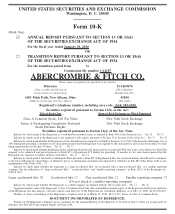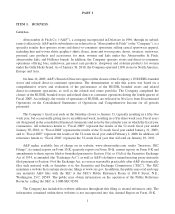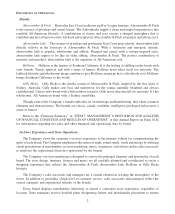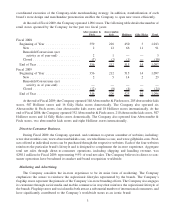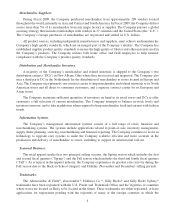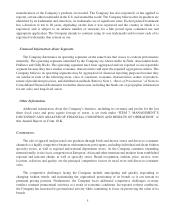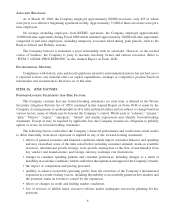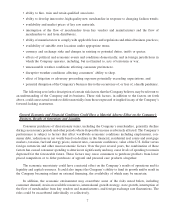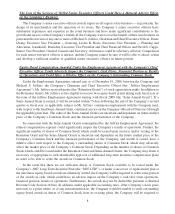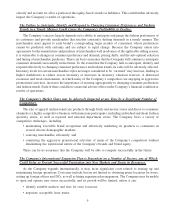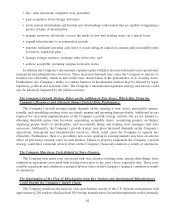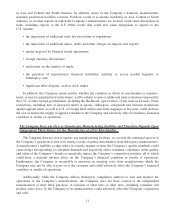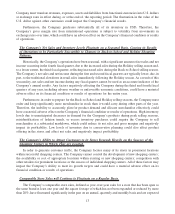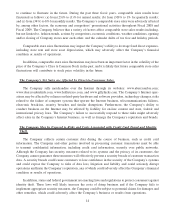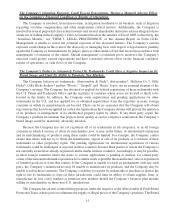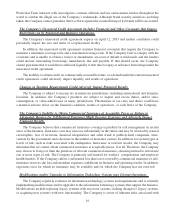Abercrombie & Fitch 2009 Annual Report Download - page 11
Download and view the complete annual report
Please find page 11 of the 2009 Abercrombie & Fitch annual report below. You can navigate through the pages in the report by either clicking on the pages listed below, or by using the keyword search tool below to find specific information within the annual report.
• hire, train and retain competent store personnel;
• gain acceptance from foreign customers;
• foster current relationships and develop new relationships with vendors that are capable of supplying a
greater volume of merchandise;
• manage inventory effectively to meet the needs of new and existing stores on a timely basis;
• expand infrastructure to accommodate growth;
• generate sufficient operating cash flows or secure adequate capital on commercially reasonable terms
to fund its expansion plan;
• manage foreign currency exchange risks effectively; and
• achieve acceptable operating margins from new stores.
In addition, the Company’s international expansion plan will place increased demands on its operational,
managerial and administrative resources. These increased demands may cause the Company to operate its
business less efficiently, which in turn could cause deterioration in the performance of its existing stores.
Furthermore, the Company’s ability to conduct business in international markets may be affected by legal,
regulatory, political and economic risks. The Company’s international expansion strategy and success could
also be adversely impacted by the global economy.
The Company’s Growth Strategy Relies on the Addition of New Stores, Which May Strain the
Company’s Resources and Adversely Impact Current Store Performance.
The Company’s growth strategy largely depends on the opening of new stores, particularly interna-
tionally; and remodeling existing stores in a timely manner and operating them profitably. Additional factors
required for successful implementation of the Company’s growth strategy include, but are not limited to:
obtaining desirable prime store locations; negotiating acceptable leases; completing projects on budget;
supplying proper levels of merchandise; and successfully hiring and training store managers and sales
associates. Additionally, the Company’s growth strategy may place increased demands on the Company’s
operational, managerial and administrative resources, which could cause the Company to operate less
efficiently. Furthermore, there is a possibility new stores opening in existing markets may have an adverse
effect on previously existing stores in such markets. Failure to properly implement the Company’s growth
strategy could have a material adverse effect on the Company’s financial condition or results of operations.
The Company May Incur Costs Related to Store Closures.
The Company may incur costs associated with store closures resulting from, among other things, lease
termination agreements associated with closing stores prior to the store’s lease expiration date. These costs
could be significant and could have a material adverse effect on the Company’s financial condition or results
of operations.
The Interruption of the Flow of Merchandise from Key Vendors and International Manufacturers
Could Disrupt the Company’s Supply Chain.
The Company purchases the majority of its merchandise outside of the U.S. through arrangements with
approximately 209 vendors which include 305 foreign manufacturers located throughout the world, primarily
10

